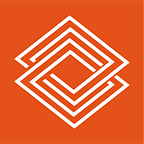Progressive interview
Since I started working as a software developer in 2005, I may see a lot of progression in the hiring process. At that time, the developer should do the programming job. In other words, the developer receives a big and fat specification document and then starts coding like a locomotive because everything you need is on that document. Nowadays, we think this is funny, but somewhere there are companies still doing that way. Fortunately, we evolved into a new status quo where this no longer meets our reality because the developer should have other skills like:
- Talk with the customer
- Do presentations
- Critical reflections
- Time management
- Assume responsibility
- Take initiative
- Decision making
- Learning
- Write articles
- Code review
This list grows more and more, I could write a big one, but the proposal here is a little different. So my point is, how could we find people that fit with these expectations? How can we hire the right person?
Those questions are tough to answer. I have seen many companies try to make improvements in the hiring process for many years, I like that. I hope this tentative for looking for something better should never stop. Continuous improvement is one of many keys to building an agile culture.
It is obvious we need human resources helping with the process. They can identify some behavior in advance, and this saves time and company money. Another approach is taking a test to determine technology skills.
After the HR filtering, and after correcting the test, we can do the tech interview, which can take a long time because it is essential to hire the right person, right? So at least 2 hours is needed for the tech interview; this is remarkably enough for me.
First of all, when the interview starts, introduce yourself and others if present in the meeting. Say your name and what you do. After that, please talk about the interview steps because it will create a professional experience and will not allow random conversations.
Giving some time to candidates to sell themselves is a perfect moment that we need to pay attention to because we want to work with people that care about its outcomes.
Give some feedback about its challenge, talk about what is right and what is not correct. Explain and justify why the solution is right or not.
Ask questions about its solution because we want to make sure the candidate made the challenge.
This moment is like a pair programming, we should create a challenge, and we need help the candidate to write the best code.
This moment is not about clean code or syntax!
This moment is about logic and performance!
We’re working together with the candidate for a solution so that we can observe his way of thinking.
This moment we need to create a real tech life scenario and ask the candidate how can solve the problem.
The trick here is not to tell him about those topics. We need to lead the conversation and make the candidate figure out the answer alone. We can also ask which are the right technologies that could solve the problems or the best data structure for solving the problem.
The progressive interview can help us to see how far the candidate goes, and this means we can make the same conversation for everyone because the seniority will represent how far he goes.
We won’t work with people that don’t develop themselves, so it is crucial to understand how the candidate does to improve its acknowledgment.
What are the last books that you read?
What are the last POCs that you did?
If the candidate learns something, we are doing well because he will like our company and wish to work with us.
The candidate is not expecting to do hands-on tests, so we will have a great moment to observe how he will perform. We want to work with people who know how to deal with pressure and are comfortable when they need to get out of their comfort zone.
- — -
This hiring process is working til now. It has been perfect for me because building great software is about motivated people at the end of the day.
I want to leave my thanks to my friend Diego Pacheco who showed me the right way.
Originally published at https://medium.com on May 19, 2020.
